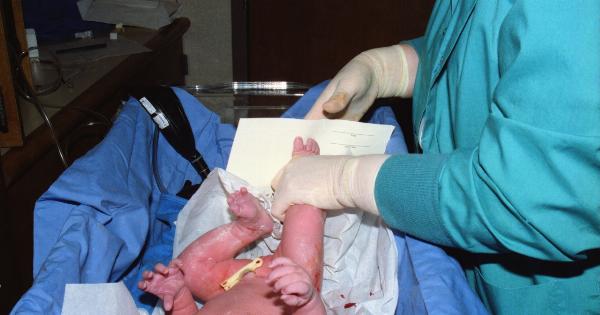A Caesarean section, commonly known as a C-section, is a surgical procedure that delivers a baby through incisions in the mother’s abdomen and uterus.
While a vaginal birth is the preferred method, a C-section may sometimes be necessary for the health and safety of the mother and baby. If you are considering a C-section, it is important to understand the risks, benefits, and reasons for the procedure.
When is a C-section necessary?
A C-section may be planned or unplanned. A planned C-section is usually scheduled in advance for medical reasons, while an unplanned C-section may be necessary during labor or delivery due to complications.
Some reasons why a C-section may be necessary include:.
- Fetal distress, which may occur if the baby is not getting enough oxygen or is experiencing other problems during labor
- Prolonged labor, which may occur if the mother’s cervix is not dilating or the baby is not descending
- Breech position, which occurs when the baby is not head-down in the uterus
- Placenta previa, which occurs when the placenta covers the cervix and may cause bleeding
- Multiple births, such as twins or triplets, which may present delivery complications
- Maternal health conditions, such as high blood pressure, preeclampsia, or diabetes, that may pose risks to the mother or baby
Risks and benefits of a C-section
A C-section is a major surgical procedure that carries risks along with the benefits. Some of the potential risks of a C-section include:.
- Bleeding and blood clots
- Infection at the surgical site or in the uterus
- Damage to nearby organs, such as the bladder or bowel
- Difficulty breastfeeding or delayed milk supply
- Increased risk of respiratory problems for the baby
- Increased risk of uterine rupture in future pregnancies
Despite the risks, a C-section may be the safest option for some mothers and babies. Some of the benefits of a C-section include:.
- Reduced risk of injury to the baby during delivery
- Reduced risk of vaginal tears and other complications
- More control over the timing of delivery
- Reduced risk of pelvic floor disorders, such as urinary incontinence
Preparing for a C-section
If you are planning a C-section, your doctor or midwife will explain the procedure and what to expect. You may be given instructions to prepare for the surgery, such as not eating or drinking after midnight the day before.
You may also be advised to pack a hospital bag with essentials for yourself and your newborn.
Before the surgery, you will be given anesthesia to numb the lower half of your body. You may be given a spinal block, epidural, or general anesthesia depending on your health and the medical situation.
The surgery usually takes 30-60 minutes, and you will be closely monitored during and after the procedure. You may be able to hold your baby soon after delivery, but you may need to stay in the hospital for a few days to recover.
The recovery process
Recovering from a C-section may take longer than recovering from a vaginal birth, but most women are able to resume normal activities within a few weeks.
You may need to take pain medication and avoid certain activities, such as lifting heavy objects or driving, for a few weeks after surgery. You should also keep the incision clean and dry and watch for signs of infection or other complications.
If you plan to breastfeed, you may experience some initial challenges due to the surgery and anesthesia, but most women are able to breastfeed successfully.
You may want to seek support from a lactation consultant or other healthcare professional to ensure a successful breastfeeding experience.
Conclusion
A C-section is a major surgical procedure that may be necessary for the health and safety of the mother and baby. If you are considering a C-section, it is important to talk to your doctor or midwife about the risks and benefits and what to expect.
Despite the potential risks, a C-section may be the safest and most effective option for some women and babies.






























